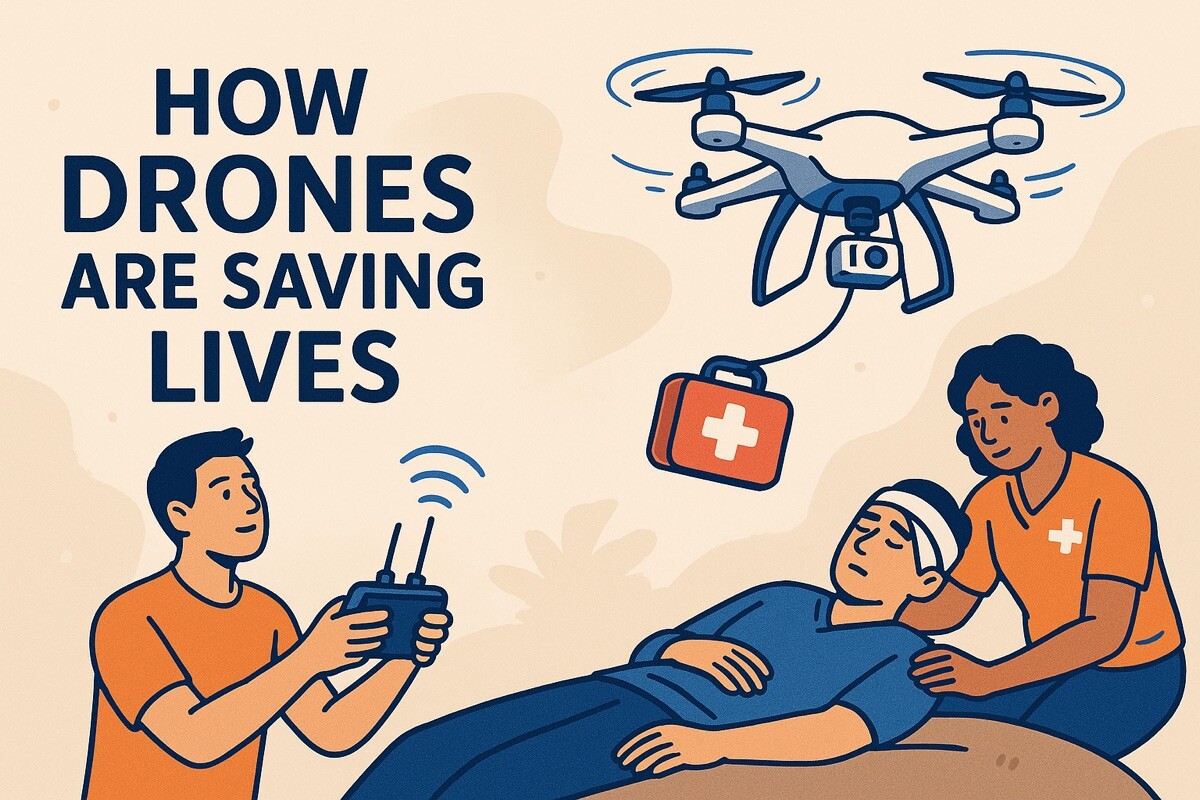
How Drones Are Saving Lives
It’s happening more often: drones saving lives. Why? Drones get there when helicopters can’t.
- A drone saved a mountaineer feared injured or dead in the Himalayas. Returning alone from a group attempt of the 26,401-foot summit of Broad Peak, Rick Allen fell about 1,300 feet. A drone was flown to an altitude higher than 27,500 feet before spotting him. Manned helicopters, even with powerful turbine engines, can generally safely reach only about 25,000 feet.
- Down in the British marshlands, a man was stuck in mud and up to his armpits in water. It was only when a drone was sent up after an unsuccessful ground search that Peter Pugh, 75, was found. “Without the police drone we would not have been able to locate him in the time we did,” said police sergeant Alex Bucher. “It allows us to search areas that are difficult to access and within close range where a helicopter may not be able to get.”
- Drones have dropped flotation devices to people floundering in the surf in Australia and Spain and have spotted swimmers in trouble in the U.S. This bought them time until lifeguards could get to them.
Advantages Over Helicopters
“Small, swift and agile, drones have all but replaced the more costly and less nimble helicopter” for all kinds of tasks, according to The New York Times. Consumer drones are more common among public safety agencies than specialized models. They’re easy to use and can get into the air at a moment’s notice.
Government agencies are rapidly integrating drones into their rescue capabilities. According to a study by Bard College’s Center for the Study of the Drone, 910 police, fire, and emergency services agencies in the U.S. use drones every day in 2017, a whopping increase of 82 percent from 2016.
In North Carolina, the Wrightsville Beach Fire Department is testing drones to assist lifeguards. One happened to be in the air when its pilot spotted a swimmer in trouble and alerted rescuers.
Rescue Missions
On Long Island, NY, John Gonzales flies a drone for the St. James Fire Department. Missions include fire response preplanning, such as determining ladder positioning. He told Government Technology that drones have been used for rescues on Long Island Sound and rivers. “The drone does 40 miles per hour; the boat does 10,” he said.
Construction Safety
In the days before drones measuring the roof of a house, like anything involving heights, was dangerous for construction workers.
“’Such peril is magnified in the construction of skyscrapers,’ said John Murphy Jr.,” a contractor on a 58-story condominium tower in downtown Miami. Before drones, workers needing access to the exterior used small platforms suspended from cables, treacherous in high winds. “’No one wants to go out there,’ he said. ‘It’s scary.’”
Bird strikes endanger lives and cost the aviation industry billions per year. In 2009 Chesley Sullenberger and Jeff Skiles successfully ditched an Airbus A320 on the Hudson River after losing thrust in both engines. The cause: a flock of Canadian geese, an unavoidable hazard for planes taking off and landing.
Engineers at Caltech found a way to program a drone to shepherd birds away from airports controllably, as a flock, avoiding panicking birds into random flight.
Ambulance and Disaster Drones
NATO-compliant ambulance drones have flown demonstration missions to ferry injured people to medical care. Their small size helps them can get to places manned vehicles on the ground or in the air can’t.
Researchers at the William Carey University College of Osteopathic Medicine have demonstrated disaster drones that could deliver telemedical packages directly to victims. Integrating medical intervention with drones is the objective, said Dr. Italo Subbarao. “On-site medical expertise [would] give people on the scene a real medical intervention capability.”
Drones in search and rescue are here. One day one of them may save your life.

